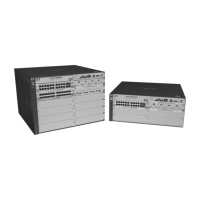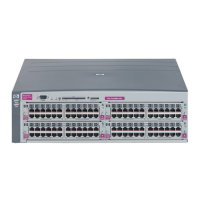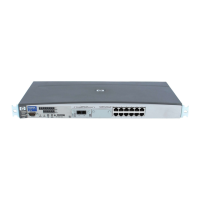8-5
Classifier-Based Software Configuration
Traffic Classes
■ If a default class is configured in the policy, the actions specified in the
default-class command are performed on packets that do not match the
criteria in preceding classes in the policy (see Step 3 in “Creating a Service
Policy” on page 8-25).
The following match criteria are supported in match/ignore statements for
inbound IPv4/IPv6 traffic:
■ IP source address (IPv4 and IPv6)
■ IP destination address (IPv4 and IPv6)
■ Layer 2 802.1Q VLAN ID
■ Layer 3 IP protocol
■ Layer 3 IP precedence bits
■ Layer 3 DSCP bits
■ Layer 4 TCP/UDP application port (including TCP flags)
■ VLAN ID
Traffic Class Configuration Procedure
To configure a traffic class to be used in one or more policies, follow these
steps:
1. Enter the class command from the global configuration context.
Context: Global configuration
Syntax: [no] class < ipv4 | ipv6 > <classname >
Defines a traffic class and specifies whether a policy is to be
applied to IPv4 or IPv6 packets, where < classname > is a
text string (64 characters maximum).
After you enter the class command, you enter the class
configuration context to specify match criteria. A traffic
class contains a series of match and ignore commands, which
specify the criteria used to classify packets.
The no form of the command removes the existing class.

